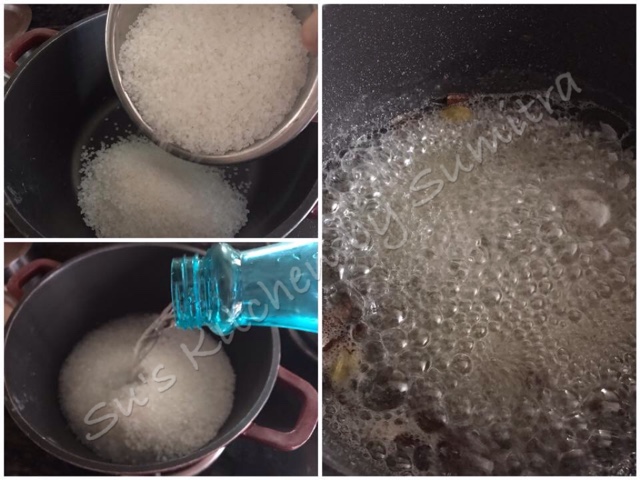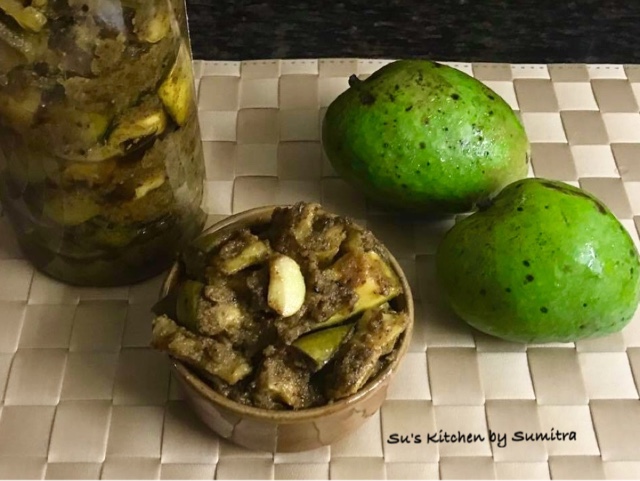Summers are in and last few days was quite happening for me. Today since back to normal life, wanted to make a simple Bengali style fish dish with raw mango for lunch. This dish goes well with hot steaming rice.
I have used baby rawas. It’s a tangy medium curry dish.
Ingredients
4 pieces of Baby Rawas whole cleaned and marinate with 1/2 tsp of Turmeric and Salt
1 medium size Onion sliced
2 medium size Potatoes cut into wedges
6 to 8 wedges of peeled Raw Mango
2 Green Chillies slit
1 tsp chopped Coriander
1/2 tsp chopped Garlic
1/2 tsp Nigella seeds
1/2 tsp Turmeric powder
1/2 tsp Chilli powder
1 1/2 tsp Sugar
Salt to taste
6 tbsp + 1/2 tsp Mustard Oil
Method
Take a pan, add 6 tbsp oil. Once the oil heats up then add the fish. Fry the fish until golden brown from both the sides. Remove the fish. In the same pan add nigella seeds, chopped garlic, green chillies and sliced onion. Stir and sauté it till the onions becomes light brown in colour. Add the potatoes, stir and cook for 5 minutes. Add the mango wedges and stir once more. Add 2 cups of water, turmeric powder, chilli power, sugar and salt. Stir and cover the pan. Open the lid and check if the potatoes are tender. Add the fish, add 1/4 cup of water. Cover and let it cook for another 2 minutes. Open the lid and drizzle 1/2 tsp Mustard oil and garnish with chopped Coriander leaves. Enjoy it with hot steaming rice.


















































